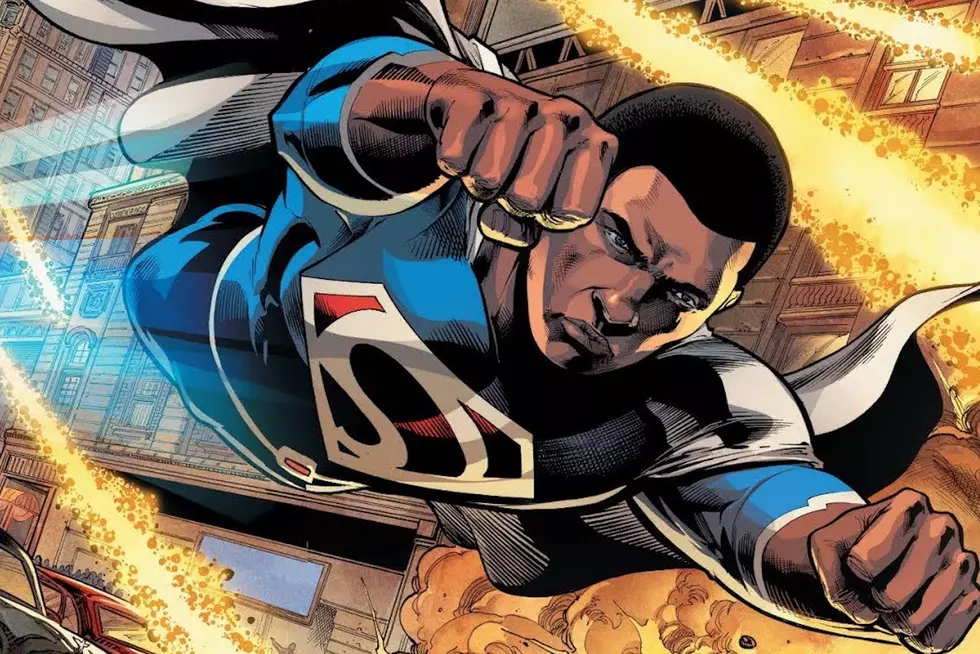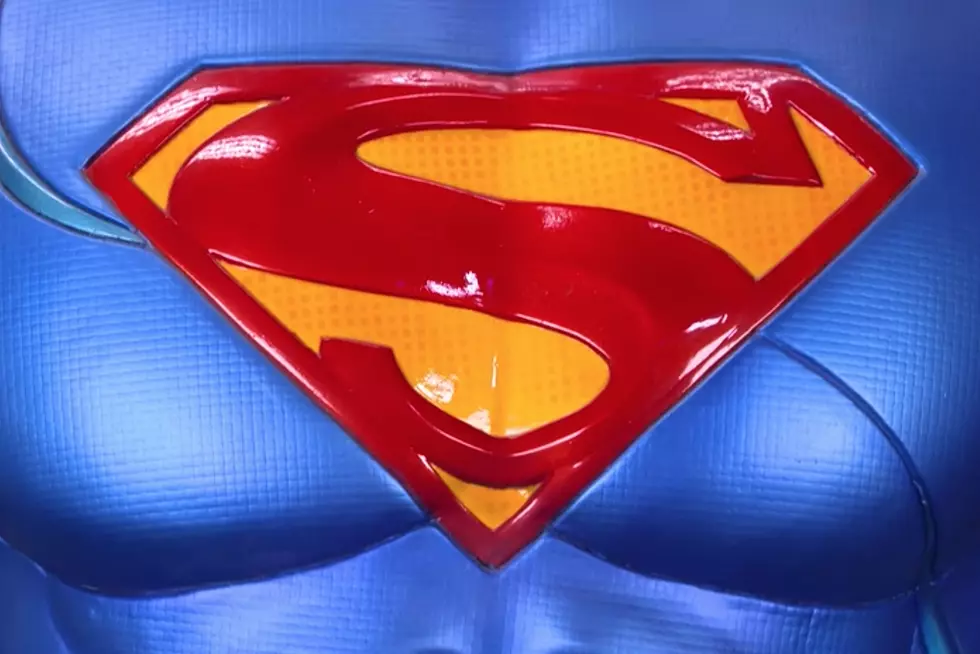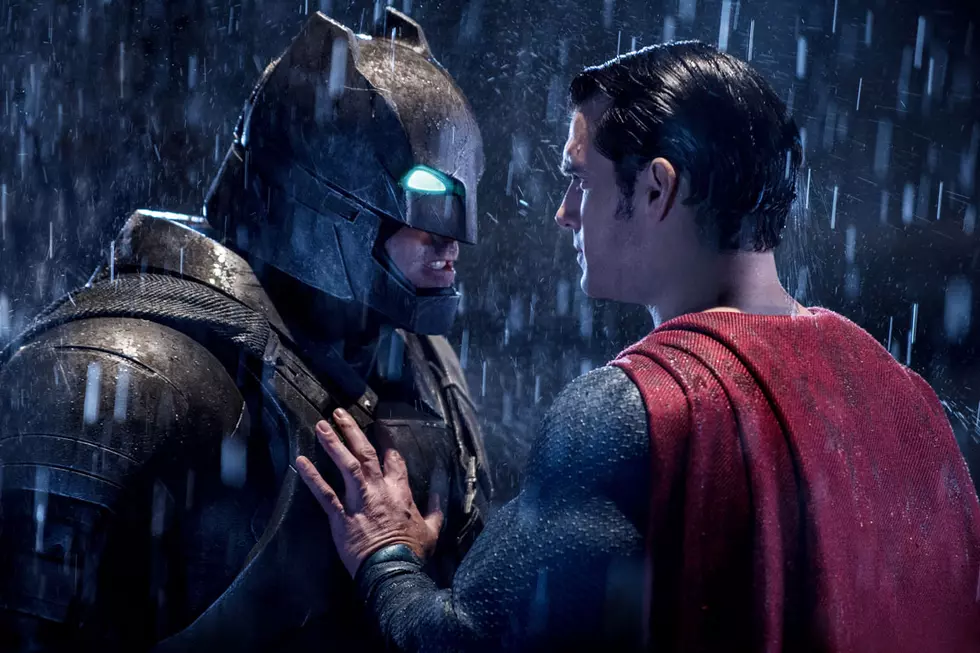
Remembering Joe Shuster, The First Superhero Artist
On July 10th, 1914, Joe Shuster was born to a pair of Jewish immigrants living in Toronto. As a young man living in Cleveland, Shuster befriended another first-generation American named Jerry Siegel, and together the two created both a genre and an icon with Superman.
The years of legal battles and ignominy are well-known, but it's important to think of Shuster as more than a tale of woe. Let's take a moment to consider Shuster's greatest contribution to comics: raw power.
After slogging it out in fanzines, drawing comics on wrapping paper, and receiving who-knows-how-many rejections, Shuster hit it big in comics alongside Siegel in 1938, when the duo's "Superman" feature got the cover of National Allied's Action Comics #1. So big, so quickly, in fact, that there was no system in place to prepare or protect them from the mania that they created. One day there were no superheros, and the next, there were. One day Siegel and Shuster were desperate nobodies, and soon thereafter they were the stewards of a new kind of fiction; no longer nobodies, but still desperate.
There doesn't seem any way possible for anyone born after 1930 to understand just how big Superman became in such a short time. Within just a couple of years of that first appearance, there were cartoons, serials, radio shows, a daily syndicated strip, and several comics publishing Superman stories --- Action Comics, Superman, and Superboy included.
Although Shuster and Siegel didn't have proper creators' rights or royalties --- they sold Superman to National Allied for 130 dollars, after all --- they did get steady work, with the daily strips and several simultaneous comic books, and as part of their deal their byline was applied to all of it.
Obviously, Shuster wasn't completing seventy-five pages of comics a week. As was a common practice, Shuster farmed work out to others, running what became known as "The Shuster Shop." A team of ghost artists that included John Sikela and Wayne Boring over the years, the Shuster Shop worked basically like an assembly line. Shuster roughed out all the layouts then handed them off to Boring, Paul Cassidy, or others to be finished and inked --- except for Superman and Lois's heads. That job remained Shuster's.
Unless you're a comics historian, this practice can make it hard to tell exactly what Shuster did, but that doesn't matter: his imprint is on all of it. He was heavily involved in every step of the process, directing artists who were much more refined than him. Boring and Cassidy, certainly, were better draftsmen, with tighter lines and better understandings of anatomy, and design. Still, everybody in the shop adapted to him rather than the other way, each bringing something of their own, but each attempting to mimic his style -- and that's justified. As great as the other artists were, Shuster toppled just about everybody when it came to sheer brute force.
It's present in the first Superman story, in Action Comics #1. Though both Siegel and Shuster were very crude, it actually remains a surprisingly powerful story. Siegel's dialogue is terrible and the plot is tissue-thin, but his righteous anger burns bright and authentic. Shuster's figures are stiff, his framing cramped, and his transitions clunky or non-existent, but his pages exude raw energy like a power chord through a Marshall.
Shuster's Superman is an imposing figure, with an intensity that borders on ferocity. In one-on-one shots, he takes over the panels, lunging at and towering over the others. Shuster undeniably had skill as a cartoonist, and was able to capture looks of awe and terror in just a few lines. The horrified expression of the character on the cover of Action Comics #1 is just as important to the iconic image as Superman and the car.
In action scenes, Superman is a force of nature. Shuster's pen lines were heavy, and his hatched shading and thick speed-lines rendered the first superhero as a menacing blur; simultaneously dark but colorful. He slams cars into the ground with all the momentum of those thick lines behind him; he throws others into walls so hard they crack the panels. And even in those awkward jumping-before-flying days, Shuster captures some kind of animal energy in the way Superman moves.
Over the years of the Shuster Shop, Sikela, Boring, and the others brought a slickness to Shuster's work that was much better for the friendly, science fiction-flavored tone that the character undertook in the late 40s. Unfortunately, it also probably made it that much easier for DC to give Siegel and Shuster a payout that removed their bylines, and though it was a healthy sum, it represented a fraction of a fraction of what they deserved.
As an artist, it seems like Shuster still deserves more credit as well. Regardless of which artist did what, Shuster was the one who ignited the spark. The term "punk rock" gets thrown around too often, but it seems apt in his case. Crude, unrefined, and energetic, he set the template for everything that followed with an explosive style that invented the genre.
After the split with National/DC, Shuster drew a few more comics for Charlton, Funnyman with Siegel, and, as discovered pretty recently, even a few S&M illustrations (which have an intensity to them similar the earliest Superman comics, strangely enough), but that's about it. He refined his style and grew as an artist as much as he could before failing eyesight made it impossible to continue. Though he retired a better artist than he started, he never achieved the kind of creative success he did with his raucous, angry days with Superman.
It should come as some consolation, though, that nobody else achieved what he did. Despite the greatness of the Superman artists that followed --- Boring, Curt Swan, Al Plastino --- none of them could match Shuster's raw energy. He may not have technically been very good, but he was certainly great.
Check Out Some Strange and Surprising DC Comics Facts
More From ComicsAlliance









